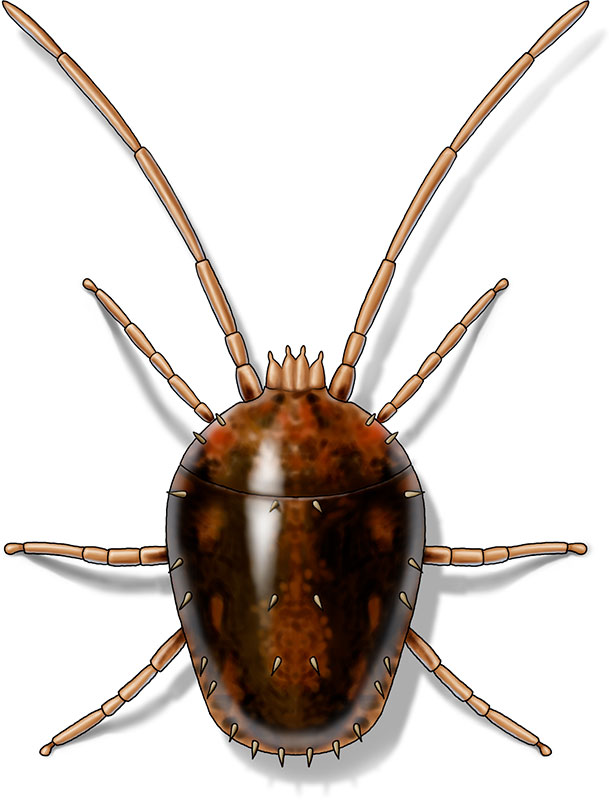Clover Mite

Order/family: Acari/Tetranychidae
Scientific Name: Bryobia praetiosa
Description: Clover mite adults are about 1/64” long and brown to live green. Their body shape is similar to that of ticks. The adults and nymphs have eight legs. They are easily distinguished from other mites by their very long front legs which are longer than the body and twice as long as any of the other legs. The younger stages are bright red, as are the eggs which are smooth and round.
Bird Mites
Order/family: Acari/Various
Scientific Name: Ornithonyssus sylviarum (Northern fowl mite)
Description: Bird mites will readily bite humans especially when the birds have abandoned their nest(s). Bird mites are approximately 1/32” long. Adults have eight legs, larvae have 6, and possess the same body shape as ticks, though a lot smaller. Mites are more transparent and do not have festoons (the rectangular areas on the posterior edge of the abdomen that many hard ticks have). The chicken mite has a very broad dorsal shield which gradually tapers toward the posterior end. The northern fowl mite has a very wide dorsal shield for three-fourths of its length, then it becomes very narrow.
Rodent Mites
Order/family: Acari/Various
Scientific Name: Laelaps echidnina (Spiny rat mite); Liponyssoides sanguineus (House mouse mite)
Description: Rodent mites will readily bite humans especially when rodents have abandoned their nest(s). Approximately 1/32” long, adults and nymph have eight legs (large have 6) and the same body shape as ticks. Mites are more transparent than ticks, their mouthparts are different, and they do not have festoons or posterior indentations that appear on the rear of many hard ticks. The spiny rat mite has a very large genitoventral plate with the posterior margin curved inward to accommodate the insertion of the anal plate. The female house mouse mite has two dorsal shields.
